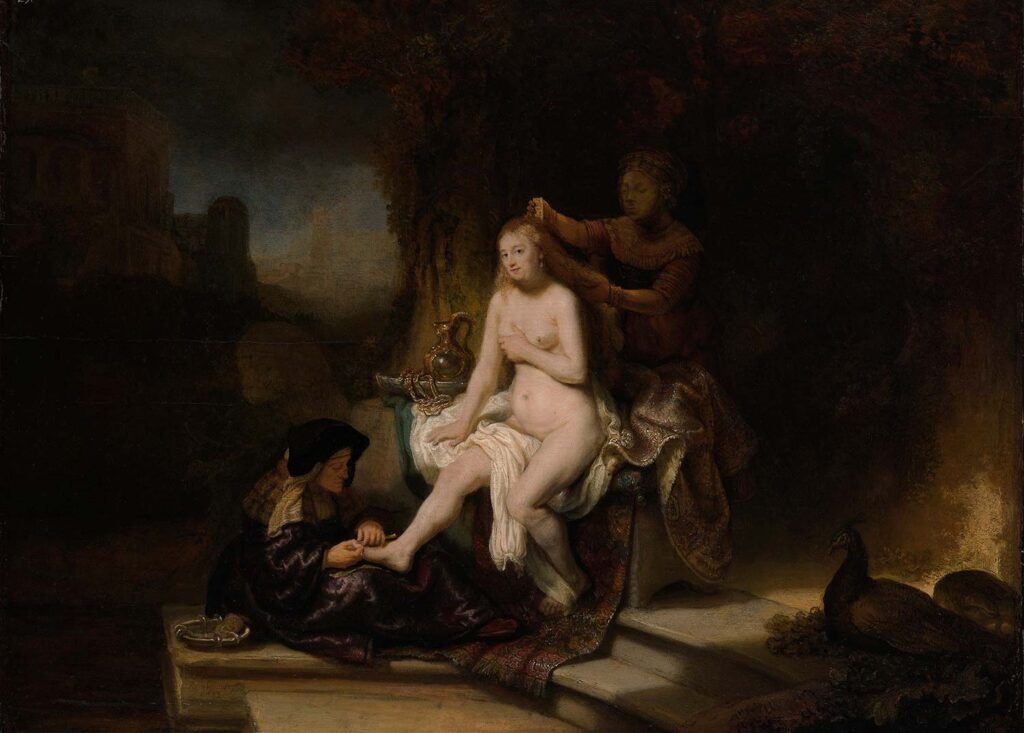The Toilet of Bathsheba by Rembrandt van Rijn was created in 1643. The painting is in Metropolitan Museum of Art New York. The size of the work is 57,2 x 76,2 cm and is made of oil on wood.
Rembrandt shows the biblical figure Bathsheba completely nude, lost in a moment of contemplation and unaware that she is being observed by King David in the distant tower in the background. Classicist critics particularly objected to Rembrandt’s realistic representation of the female body, declaring that the marks of garters could be seen on the legs of his figures from history or myth—see Bathsheba’s left calf here. Like much of the picture, the attendant arranging Bathsheba’s hair is badly abraded from past cleaning, but she may have been intended to represent a woman of African origin. Read more in Metropolitan Museum of Art.
About the Artist: Dutch Golden Age painter, printmaker and draughtsman Rembrandt was born on 15 July 1606 in Leiden, in the Dutch Republic, now the Netherlands. As a boy, he attended a Latin school. At the age of 13, he was enrolled at the University of Leiden, although according to a contemporary he had a greater inclination towards painting. In 1624 or 1625, Rembrandt opened a studio in Leiden, which he shared with friend and colleague Jan Lievens. In 1627, Rembrandt began to accept students, which included Gerrit Dou in 1628 and Isaac de Jouderville… Read more
Order a reproduction of this work (printed on canvas)

